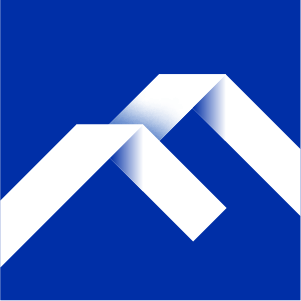Placeholder: DeFi is booming, but the next step for Web3 is non-financial applications
Original author: Mario Laul
Original translation: Luffy, Foresight News
Decentralized public blockchain networks have been around for about 15 years, and the associated crypto assets are currently experiencing their fourth market cycle. Over the years, and especially since the launch of Ethereum in 2015, a great deal of time and resources have been invested in researching and developing applications based on these blockchain networks. While impressive progress has been made in financial use cases, other types of applications have struggled, largely due to the complexity of providing a scalable and seamless user experience within the constraints of decentralization, as well as the disagreements between different ecosystems and standards. However, recent technological advances within and outside the blockchain industry have made broader applications not only feasible, but more necessary than ever.
The early stages of blockchain adoption were driven by a narrow definition of its core functionality: enabling the secure issuance and tracking of digital assets without reliance on centralized intermediaries such as traditional financial institutions or government agencies. Whether we are talking about blockchain-native fungible tokens such as BTC and ETH, on-chain forms of off-chain assets such as national currencies and traditional securities, or non-fungible tokens (NFTs) representing artwork, in-game items, or any other type of digital product or collectible, blockchain tracks these assets and allows anyone with internet access to trade them globally without reliance on centralized financial channels. Given the size and importance of the financial industry, especially in the context of growing digitization, globalization, and financialization, this disruptive use case alone is enough to justify the interest in blockchain.
Within this narrow framework, there are currently five blockchain applications with significant product-market fit, beyond the underlying asset ledgers and the decentralized networks that maintain them: applications for issuing tokens, applications for storing private keys and transferring tokens (wallets), applications for trading tokens (including decentralized exchanges, aka DEXs), applications for lending and borrowing tokens, and applications that give tokens a predictable value relative to traditional fiat currencies (stablecoins). As of this writing, crypto market data aggregation platform Coingecko lists over 13,000 individual crypto assets with a total market cap of approximately $2.5 trillion and daily trading volume of over $100 billion. Nearly half of this value is concentrated in Bitcoin, with the vast majority of the other half spread across the top 500 assets. The very long and growing tail of cryptocurrencies, especially since NFTs have been added to the mix, shows just how much demand there is for blockchain as a digital asset ledger.
According to recent estimates, there are approximately 420 million people worldwide who hold cryptocurrencies, many of whom may have never or rarely interacted with decentralized applications. Hardware wallet manufacturer Ledger reports that its Ledger Live software has approximately 1.5 million monthly active users, while software wallet providers MetaMask and Phantom claim approximately 30 million and 3.2 million monthly active users, respectively. Add to that approximately $5-10 billion in daily DEX trading volume, approximately $30-35 billion worth of locked capital in the on-chain lending market, and a stablecoin market cap of approximately $130 billion, and these numbers reflect the current level of adoption of the five applications mentioned above. They are still small relative to traditional finance and fintech, but still significant. Granted, these numbers should be viewed in the context of the recent surge in crypto asset prices, but as blockchains become increasingly legitimized (the approval of spot Bitcoin ETFs and tailored regulatory frameworks such as Europe's MiCA are recent notable examples), they are also likely to continue to attract new capital and users, especially in the context of increasing integration with traditional financial assets and institutions.




However, when it comes to applications that can be built on general-purpose programmable blockchains, token issuance, wallets, DEXs, lending, and stablecoins are just the tip of the iceberg. But these 5 use cases are not enough to prove that blockchain is not only an enhanced asset ledger, but also a universal replacement for decentralized databases and web application platforms. The number of developers worldwide is approaching 30 million, and according to Electric Capital’s latest crypto developer report, there are still less than 25,000 active developers building on public blockchains per month, of which only about 7,000 are full-time developers. These numbers show that blockchain is currently far from competing with traditional software platforms in attracting developers. However, the number of developers with at least 2 years of cryptocurrency experience has increased for 5 consecutive years, the industry has multiple blockchain network ecosystems, each with more than 1,000 contributors, and has attracted more than $90 billion in venture capital in the past 6-7 years. While the vast majority of this funding is indeed used to build underlying blockchain infrastructure and core decentralized finance (DeFi) services (the backbone of the emerging on-chain economy), there is also strong interest in blockchain use cases in non-financial areas such as online identity, gaming, social networks, supply chains, IoT networks, and digital governance. How successful are these types of applications on the most mature and widely used smart contract blockchains?
There are three main metrics that measure the level of user interest in specific blockchains and applications: daily active addresses, daily transactions, and daily fees paid. Before interpreting these metrics, you need to know that they can all be artificially inflated and therefore generally represent the most generous estimates of organic adoption. According to Artemis, an on-chain data aggregator, six networks stood out in all three metrics over the past 12 months (each network ranked in the top 6 on at least two metrics): BNB Chain, Ethereum, NEAR, Polygon (PoS), Solana, and Tron. Four of these networks (BNB Chain, Ethereum, Polygon, Tron) use a version of the Ethereum Virtual Machine (EVM), and therefore benefit from Solidity, a programming language created specifically for the EVM, and the extensive tooling and network effects surrounding it. Both NEAR and Solana have their own native execution environments, based primarily on the Rust language, which, despite being more complex, offers multiple performance and security advantages over Solidity and has a thriving ecosystem outside the blockchain industry.



On-chain activity on all 6 networks is highly concentrated in the top 20 applications, with daily active addresses for lower ranked applications dropping significantly, depending on the network. As of March 2024, on a typical day, the top 20 applications account for 70-100% of activity across all three metrics, with Tron and NEAR having the highest concentration and Ethereum and Polygon having the lowest concentration. Across all networks, the top 20 applications are primarily composed of applications related to tokenization, wallets, and core DeFi primitives (exchanges, lending, stablecoins), with no or only a few applications (0-4 per network) falling outside of these three categories. The few remaining outliers are typically games or social applications, with the exception of cross-chain bridges for transferring value across different blockchains and marketplaces for trading NFTs (both of which should be included in the asset transfer and trading categories). However, in most cases, these applications have a low share of overall network activity (less than 20% in the best case for Polygon, but less than 10% is common). The only exception is NEAR, but its usage is very concentrated, with two applications (Kai-Ching and Sweat) accounting for ~75-80% of all on-chain activity, and less than 10 applications in total with more than 1,000 daily active addresses.


The above reflects the legacy of the early days of blockchain development and further solidifies its core value proposition as a digital asset ledger. Criticisms of blockchains’ lack of applications are clearly unfounded, as their primary function is programmable financialization and secure settlement of tokenized value. Asset issuance, wallets, DEXs (or exchanges more broadly), lending protocols, and stablecoins have such a strong product-market fit simply because they are closely tied to this purpose. Given that all 5 areas have relatively simple business logic and strong positive feedback loops, it is not surprising that the first generation of leading smart contract blockchains tend to be dominated by applications that serve this narrow set of financial use cases. And, since the proposed uses of many blockchain applications with non-financial utility are ultimately also related to tokenization and financialization, these 5 financial applications are likely to dominate the major general-purpose blockchains in the long run.
But where does this leave blockchain in terms of the grander vision of being a general-purpose application platform? For years, the two major challenges facing the crypto industry have been (1) scaling blockchains (in terms of throughput and cost), and (2) enabling a user-friendly experience without sacrificing the decentralization and security guarantees of the underlying infrastructure. In the context of scaling, a distinction is often made between more integrated and more modular architectures, with Solana often being used as a representative of the former, and Ethereum and its growing ecosystem of general-purpose and application-specific Layer 2 networks (Rollups) representing the latter. In reality, the two approaches are not mutually exclusive, and there is considerable overlap and crossover between them. The more important point is that both are now tried-and-true ways to scale blockchains, depending on whether the application in question requires shared state and maximum composability with other applications, or does not care about seamless interoperability while reaping the benefits of full sovereignty over its governance and economy.
Currently, the end-user experience of blockchain applications is also constantly improving. Specifically, thanks to technologies such as account abstraction, chain abstraction, proof aggregation, and light client verification, it is now possible to safely clear some of the major user experience barriers that have plagued cryptocurrency for many years: the need to store private mnemonics, the need for network-specific tokens to pay transaction fees, limited account recovery options, and over-reliance on third-party data providers, especially when using multiple independent blockchains at the same time. Combined with the growing decentralized data storage, verifiable off-chain computation, and other back-end services for enhancing the functionality of on-chain applications, the current and upcoming application development cycle will show whether blockchain will stay in its primary role as global financial infrastructure or take on a more general role. In addition to DeFi, there are many use cases that can benefit from greater resilience and user-centric control of data and transactions, such as online identity and reputation, publishing, gaming, physical infrastructure such as wireless and IoT networks (DePIN), decentralized science (DeSci), and solving the problem of authenticity in the world of digital content generated by artificial intelligence. Therefore, the latter has always been attractive in theory. Now, it becomes feasible in practice.



